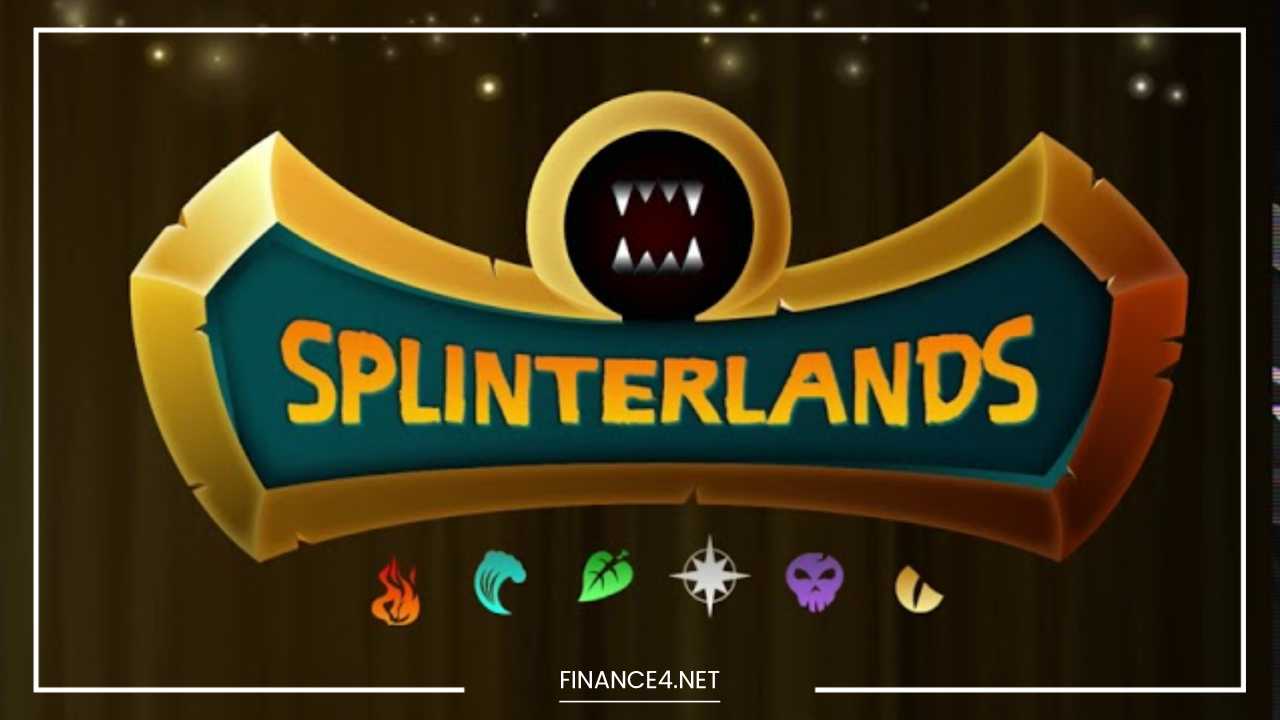What Is Splinterlands?

Splinterlands
Splinterlands: An In-Depth Exploration of a Digital Trading Card Game
Splinterlands stands out as a revolutionary digital trading card game (TCG) set against the backdrop of the Hive blockchain.
This game intricately blends the strategic elements of traditional card games with the innovative features of blockchain technology, resulting in a unique and immersive experience for players.
In this comprehensive article, we will explore the core concepts of Splinterlands, delve into its gameplay mechanics, and uncover the numerous benefits of participating in this dynamic game.
Understanding the Basics of Splinterlands
At its essence, Splinterlands is a strategy-driven game where players engage in the collection, trading, and battling of digital cards.
Each card in the game represents a distinctive character or creature endowed with unique abilities, attributes, and rarity levels.
The primary objective is to construct a formidable deck and compete against other players in turn-based battles. Success in these battles requires not only a well-thought-out deck but also strategic acumen and adaptability.
The Hive Blockchain Integration
Splinterlands operates on the Hive blockchain, a decentralized platform known for its security, transparency, and efficiency.
This integration ensures that every card and in-game asset is securely stored and verifiable, giving players complete ownership and control over their digital possessions.
The blockchain foundation also facilitates transparent gameplay mechanics, as every transaction and battle outcome is recorded immutably.
Gameplay Mechanics of Splinterlands
Card Collection
Card collection is a fundamental aspect of Splinterlands. Players can acquire new cards through various methods, each contributing to the growth of their card collection.
Cards can be purchased in packs, earned as rewards from battles, or obtained through trading with other players.
Each card has a unique combination of attributes, abilities, and rarity, making card collection both a strategic and enjoyable pursuit.
- Purchasing Packs: Players can buy card packs using the in-game currency or cryptocurrency, which contain a random assortment of cards. This method introduces an element of chance and excitement, as players may discover rare and powerful cards.
- Earning Rewards: Engaging in battles and completing in-game tasks can yield card rewards. This rewards system incentivizes players to actively participate in the game and improve their skills.
- Trading: The ability to trade cards with other players adds a social and economic dimension to the game. Players can negotiate trades to acquire specific cards they need or to offload surplus cards.
Deck Building
Once players have amassed a collection of cards, they can create decks tailored to their strategic preferences. Deck building involves selecting a set number of cards to form a cohesive strategy, considering factors such as card abilities, attributes, and synergy between cards.
The deck-building process is crucial for success in battles, as the right combination of cards can significantly impact the outcome.
- Strategic Deck Composition: Players must balance various types of cards, including attackers, defenders, and support units. Each card’s abilities and attributes must complement the overall strategy and counter the strengths of opponents.
- Customization: The flexibility in deck composition allows players to experiment with different strategies and adapt to the evolving meta-game, keeping the gameplay experience fresh and engaging.
Battles
Battles in Splinterlands are turn-based and take place on a grid-based battlefield. Players take turns summoning creatures, casting spells, and attacking their opponent’s cards.
The battle system requires tactical thinking and strategic planning, as players must anticipate their opponent’s moves and make optimal decisions.
- Turn-Based Mechanics: Players alternate turns, which adds a layer of strategy as they plan their actions while considering the potential responses from their opponents.
- Grid-Based Battlefield: The grid layout of the battlefield influences positioning and strategy. Players must position their creatures effectively to maximize their offensive and defensive capabilities.
- Victory Conditions: The objective of each battle is to reduce the opponent’s health points to zero. Success depends on the strategic deployment of cards and effective use of abilities.
Ranking System
Splinterlands features a competitive ranking system that rewards players based on their performance in battles. Players earn points for victories and can advance through different ranks, each offering increased rewards and exclusive opportunities.
- Ranked Matches: Higher-ranked players face more challenging opponents, adding an element of competition and driving players to continuously improve their skills.
- Rewards and Tournaments: Players in higher ranks can earn better rewards and gain access to exclusive tournaments. This system incentivizes players to strive for higher rankings and participate in competitive events.
Unique Features of Splinterlands
Decentralization
One of the standout features of Splinterlands is its foundation on the Hive blockchain. Decentralization ensures that players have full control over their assets and transactions.
Unlike traditional games where assets are controlled by a central authority, Splinterlands leverages blockchain technology to provide transparency and security.
- Player Ownership: Players own their digital cards and assets, which are represented as non-fungible tokens (NFTs) on the blockchain. This ownership extends to the ability to trade, sell, or utilize these assets as they see fit.
- Transparency: Blockchain technology ensures that all transactions and game outcomes are recorded and verifiable. This transparency fosters trust and accountability within the game.
Play-to-Earn (P2E) Model
Splinterlands embraces the play-to-earn (P2E) model, allowing players to earn cryptocurrency (DEC) through gameplay. This model not only rewards players for their time and effort but also creates a sustainable ecosystem within the game.
- Earning DEC: Players can earn DEC by participating in battles, completing quests, and achieving high ranks. DEC can be used for various in-game activities, including purchasing cards, participating in tournaments, and trading with other players.
- Economic Opportunities: The P2E model offers players the chance to earn real-world value through their gameplay. This economic incentive adds an extra layer of motivation and engagement.
Daily Quests and Rewards
Splinterlands includes daily quests and reward systems to encourage regular engagement with the game. These quests provide players with specific objectives to complete, offering rewards upon completion.
- Daily Objectives: Quests vary in difficulty and objectives, ranging from winning a certain number of battles to using specific types of cards. Completing these quests not only provides rewards but also helps players progress and diversify their gameplay.
- Incentives for Regular Play: By offering daily rewards, Splinterlands motivates players to log in and play regularly, contributing to a vibrant and active player base.
Community and Social Features
The Splinterlands community is an integral part of the game, offering a platform for players to connect, share strategies, and participate in events. The game’s social features enhance the overall experience and foster a sense of camaraderie among players.
- Forums and Discord Channels: Players can engage with the community through forums and Discord channels, where they can discuss strategies, seek advice, and share experiences.
- Tournaments and Events: Splinterlands hosts various tournaments and events that bring players together for competitive play and community engagement. These events often feature prize pools and exclusive rewards.
Regular Updates and Expansions
To keep the gameplay experience fresh and engaging, the developers of Splinterlands consistently release updates and expansions. These updates introduce new cards, game modes, and features, ensuring that players always have something new to explore.
- Card Expansions: New card releases and expansions introduce additional gameplay options and strategies, allowing players to adapt to the evolving meta-game.
- Game Modes: The introduction of new game modes and features adds variety to the gameplay experience, catering to different player preferences and playstyles.
The Benefits of Playing Splinterlands
Strategic Gameplay
Splinterlands offers a deep and strategic gameplay experience, requiring players to think critically and plan their moves carefully.
The game’s tactical elements encourage players to develop and refine their strategies, providing a rewarding and intellectually stimulating experience.
- Complex Decision-Making: Players must make strategic decisions regarding deck composition, card placement, and attack strategies. This complexity adds depth to the gameplay and keeps players engaged.
- Adaptability: The need to adapt to different opponents and changing game conditions ensures that the gameplay experience remains dynamic and challenging.
Community and Social Interaction
The Splinterlands community is known for its friendliness and supportiveness. Engaging with other players through forums, Discord, and in-game interactions enhances the overall experience and provides valuable opportunities for learning and growth.
- Networking: Connecting with other players allows for networking and collaboration, whether through sharing strategies or participating in team-based events.
- Support and Advice: The active community provides a valuable resource for players seeking advice, tips, and support, enhancing their overall gameplay experience.
Financial Rewards
For players interested in earning cryptocurrency, Splinterlands offers a viable play-to-earn model. The ability to earn DEC through gameplay and transactions provides an economic incentive that adds value to the gaming experience.
- Monetary Incentives: Players can earn DEC through battles, quests, and other in-game activities, which can be traded or used for further gameplay.
- Investment Opportunities: The ability to trade and sell cards on the blockchain opens up opportunities for players to invest in and profit from their digital assets.
Digital Asset Ownership
Splinterlands’ use of blockchain technology ensures that players have full ownership and control over their digital assets.
Unlike traditional games, where assets are often controlled by the game developer, Splinterlands provides players with true ownership of their cards and items.
- Trading and Selling: Players can trade or sell their digital cards on the blockchain, allowing them to monetize their collections and participate in a broader digital economy.
- Long-Term Value: The ownership and scarcity of digital cards can contribute to their long-term value, making them potentially valuable assets in the future.
Educational Value
Splinterlands serves as an engaging way to learn about blockchain technology and decentralized applications. By participating in the game, players gain firsthand experience with blockchain principles and the functioning of decentralized systems.
- Understanding Blockchain: The game provides a practical introduction to blockchain technology, helping players understand concepts such as digital ownership, smart contracts, and decentralized networks.
- Learning through Play: The interactive nature of the game makes learning about blockchain technology both enjoyable and educational.
Final Thoughts
Splinterlands represents a captivating fusion of traditional trading card game mechanics and cutting-edge blockchain technology.
Its strategic gameplay, combined with the benefits of decentralization, play-to-earn opportunities, and a vibrant community, creates a unique and rewarding gaming experience.
Whether you are a seasoned card game enthusiast or new to the world of blockchain gaming, Splinterlands offers an engaging and dynamic platform that continues to evolve and expand.
With its commitment to regular updates, a supportive community, and the potential for financial rewards, Splinterlands is well-positioned to remain a popular choice for gamers and cryptocurrency enthusiasts alike.
The game’s innovative approach to digital card gaming and blockchain integration ensures that it will continue to captivate and engage players for years to come.



